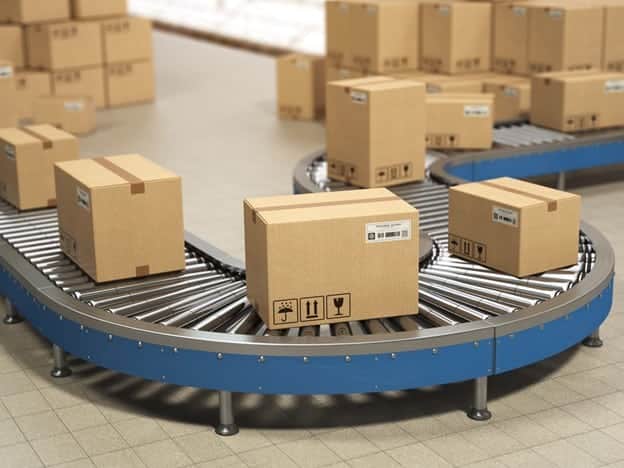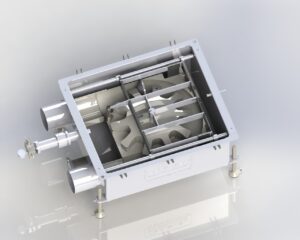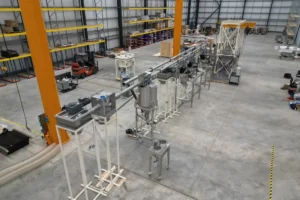The processing industry requires a lot of complex equipment in order to function properly – among the most commonly used machines are conveyors. Still, not every conveying system is the same – so what are the different types of conveyors? We’ve discussed this in more detail in our blog post, so keep reading.
What Are the Different Types of Conveyors Used in Processing Industries?
Industrial conveyor systems can be found almost anywhere – practically all manufacturing and processing industries require a safe, reliable, automated way of transporting materials or products from one place to another within the same production facility. It doesn’t matter if the product in question is ground coffee or a vehicle chassis – bulk material handling equipment is an essential part of manufacturing.
When considering new conveyor system designs for your business, there are dozens of questions you need to answer. These will determine what type of conveying is best suited for your production processes. Each conveyor comes with its own set of pros and cons that you must carefully consider before making the final decision. In this article, we’ve discussed the seven basic types of industrial conveyors and what you can expect from them.
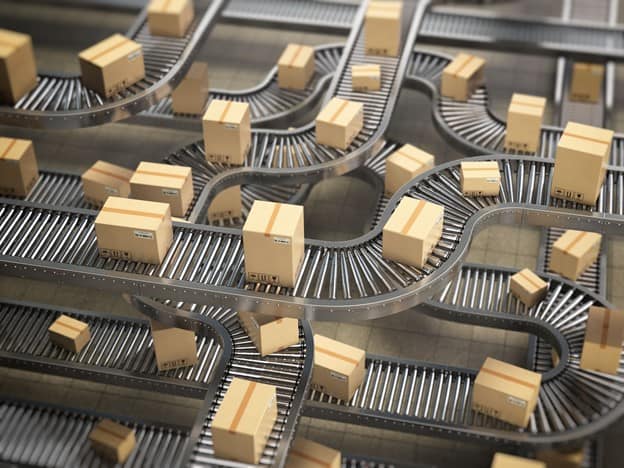
Screw (Auger) Conveyors
One of the first conveyors to be invented, screw conveyors have been around since ancient times (the Archimedes’ screw was created in ancient Greece). The mechanism of this system consists of a helical blade (screw or auger) that moves liquid or granular materials, usually within a tube. Auger conveyors are a good choice for semi-solid materials, such as:
- Animal feed,
- Aggregates,
- Food waste,
- Wood chips,
- Meat,
- Boiler ash,
- Municipal solid waste.
The rate of the material transfer is directly proportional to the rotation speed of the auger. Downsides of this conveyor system include compromised blends or breakage of the material, reduced efficiency in high inclines, and the fact that it can’t be used in spaces where multiple planes are required. At the same time, if material integrity is not of the essence (such as in transporting waste), augers have few moving parts and are easy to maintain and clean.
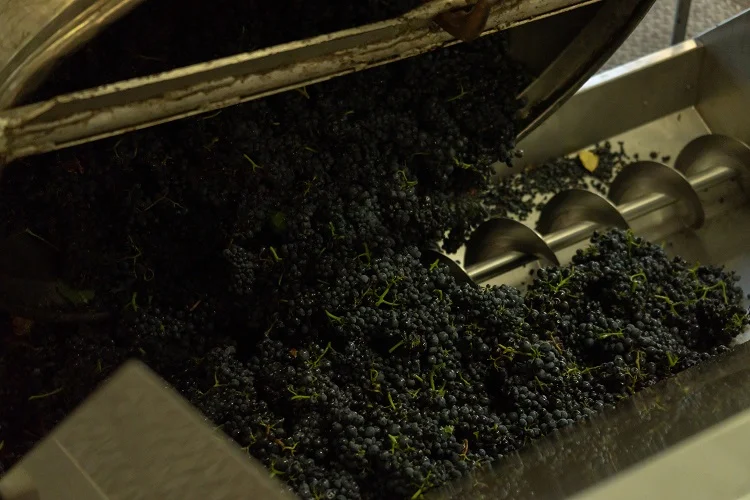
Aero-Mechanical Conveyors
At the heart of an aero-mechanical conveyor system is the principle of centrifugal force. This conveyor consists of a steel tube housing an internal rope adorned with evenly spaced discs. As these discs zip through the tube at high speeds, they generate an airstream. Once materials are introduced into this airstream, they become fluidized and are then centrifugally discharged at the exit. Notably, these aero-mechanical systems boast flexibility, capable of operating in both vertical and horizontal orientations.
Aero-mechanical conveyor systems offer the advantage of easy cleaning and the ability to move materials at a high capacity, tailored to specific applications. However, much like screw conveyors, their swift transport speeds can sometimes compromise the integrity of the materials. The need for rope-tensioning also makes them somewhat challenging to maintain. For manufacturers aiming to minimize material breakage, it’s crucial to calibrate a slower and more consistent speed for the conveyor.
Bucket Conveyor Systems (Bucket Elevators)
Bucket conveyor systems belong in the vertical conveyor category. They are meant to move flowable bulk material loads (such as fertilizer or specialty grain) upwards inside a series of buckets (multi-sided containers). Aside from the buckets, an elevator also needs a belt to carry the buckets and transmit the pull.
It needs a power source to drive the belt and accessories for collecting the material, loading the buckets, receiving the discharged material, and enclosing the elevator if needed. Bucket conveyor systems have low driving power and are, therefore, quite efficient. However, bucket elevator components require high maintenance expenses, and the conveyor equipment is challenging to clean.
Pneumatic Conveyor Systems
Pneumatic conveyor systems are designed to move dry bulk materials using either positive air pressure or a vacuum. These systems primarily consist of four main components an air source, a material feeding mechanism, a conveyance line, and an air and material separation unit. These components work together to efficiently transport materials from one location to another, ensuring a smooth and consistent transfer process.
These pneumatic conveyors transport materials within a completely sealed system, greatly reducing the chance of material wastage. They are most effective when used with fine, dry powders that can easily be fluidized through air pressure or vacuum. Some pelletized or granular materials are also good options. Pneumatic conveying systems are a good fit for:
- Sugar,
- Starch,
- Wheat flour,
- Food products,
- Sands,
- Metal powders,
- Coal fines.
Pneumatic conveyors are flexible. They require filter maintenance, and they are not energy efficient. Additionally, up to 10% of the product can be damaged by air or vacuum systems if materials are too delicate.
Belt Conveyor System
Arguably, the most common type of conveyor system, the conveyor belt for a warehouse, has found its rightful place in practically every industry. The conveyor belt for food comes with pulleys (two or more) and a closed loop (the conveyor belt) that rotates around them. One or more pulleys in the system can be powered, moving the belt in the right direction.
Conveyor Belts Have Numerous Uses
In general, there are two main types of industrial conveyor belt systems: for general materials (boxes, packages, bags, solid items, or products) and for bulk materials (grain, salt, sand, ore, coal). A custom conveyor belt system is made of a wide variety of materials and is used in many different applications, not only in an industrial setting.
You can see these conveyor systems at airports, transporting luggage, at restaurants, transporting food (especially sushi restaurants), at ski centers, transporting people and their ski equipment, and more. A belt conveyor can be enclosed to prevent contamination and loss of material but also be open if it is part of assembly lines. These systems are a good choice for transporting heavier loads.

Chain Conveyor Systems
Chain conveyors, as the name implies, utilize a continuous chain to move materials along a production line. This chain glides over sprockets located at both ends and can feature specific attachments to enhance its functionality. These conveyors excel in transporting hefty items, especially those that are notably wide, long, or both. Common items transported include industrial containers, grid boxes, and pallets.
You’ll also find chain conveyor systems playing a vital role in the pharmaceutical and automotive sectors. Within the automotive industry, these systems are often used to transport vehicle parts through paint facilities, streamlining the paint application process
Chains Can Be Difficult to Maintain Properly
The good thing about the chain systems is that individual chain links can be replaced instead of replacing the entire chain. However, chains are not easy to clean, and their sprockets often need replacement, resulting in prolonged downtime and excessive maintenance. Furthermore, chain conveyors require a lot of energy to operate, taking up quite a bit of power consumption. They are also not suitable for bulk materials because food and similar materials can accumulate in the chains and become a breeding ground for bacteria.
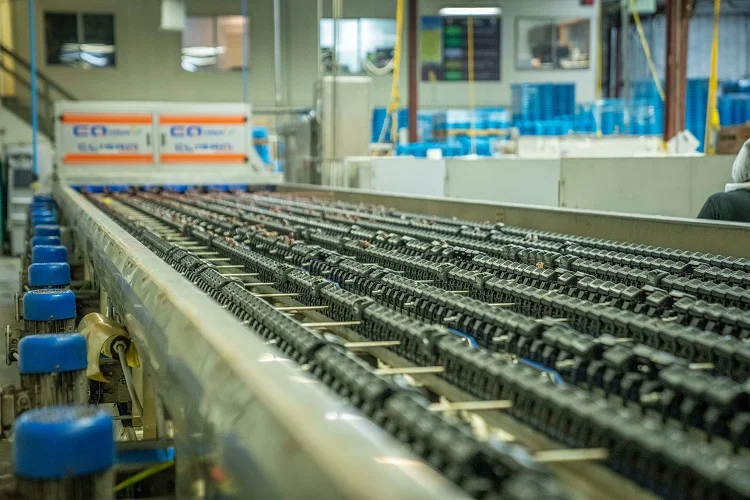
Cable Conveyor Systems
Cable conveyor systems, especially tubular cable conveyors, excel at safeguarding material integrity and reducing direct contact with food items. In these systems, a flexible, coated stainless steel cable navigates through a sealed tube. The attached solid discs on the cable drive the material smoothly down the line.
Cable conveyors are versatile and capable of transporting materials vertically, horizontally, around angles, and even corners. They’re energy-efficient, typically powered by motors of 7.5HP or less. Furthermore, their design, featuring removable components, makes maintenance a breeze.
They are incredibly gentle on the materials and allow for consistent blending and minimizing product degradation while at the same time maintaining a dust-free environment. These conveyor systems are ideal for:
- Specialty grains,
- Pet food,
- Snack foods,
- Breakfast cereal,
- Coffee,
- Nuts,
- Frozen food,
- Powdery materials,
- Biomass,
- Fluff plastic,
- Specialty seeds,
- Beans,
- Industrial hemp.
So, What’s the Ideal Conveyor System?
Our overview of common conveyor systems highlights that no one-size-fits-all solution exists. When choosing the ideal conveyor, it’s crucial to weigh several factors. Consider the system’s dimensions relative to your facility’s floor space and evaluate the material type you’re conveying. Ask yourself: Is it fragile or powdery? Is it loose or moist? Or perhaps you’re moving hefty, oversized items? Tailoring your choice to these specifics will ensure optimal performance.
Additionally, factor in maintenance and cleaning expenses, as well as potential downtime. It’s essential to ensure that your systems won’t be inactive for extended periods during maintenance. If material integrity is a priority, avoid high-speed systems that may lead to damage. Opt for conveyors known for minimal material breakage.
For a contaminant-free system that’s environmentally friendly, consider an enclosed conveyor, like the tube conveyor. Many conveyors we’ve discussed are available in enclosed versions. And remember, always compare prices and quality across multiple vendors to guarantee the best value for your investment.
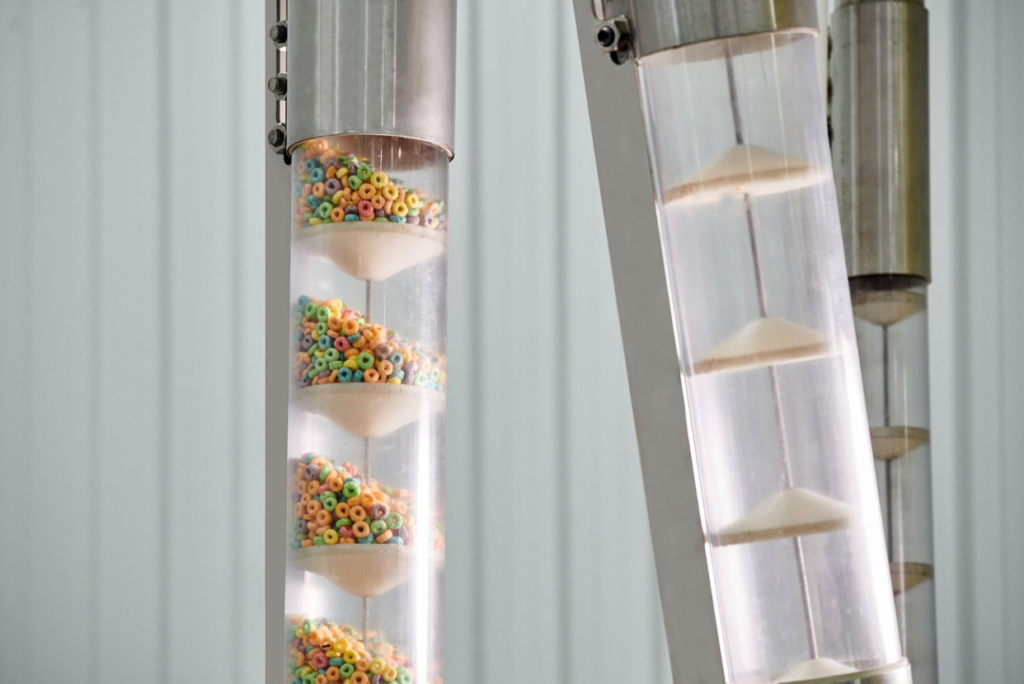
Contact Cablevey Conveyors for the Best Conveying Systems on the Market
In the realm of material handling and conveying systems, Cablevey Conveyors stands out as a beacon of innovation and reliability. For years, industries have relied on our state-of-the-art solutions to move delicate and bulk products efficiently without degradation. Whether you are in the food processing sector, the agricultural industry, or any other segment requiring precise and gentle conveyance, our tubular drag conveyor systems are tailor-made to meet the unique needs of every client.
Our commitment to quality, combined with our deep-rooted expertise, ensures that products are conveyed in the most hygienic and safe manner. Don’t compromise on quality. Reach out to Cablevey Conveyors today and elevate your operations with the best conveying systems on the market.
FAQ
What Are Conveyors Used for in the Processing Industry?
Conveyors play a pivotal role in the processing industry, ensuring materials and products move seamlessly within production facilities. They offer a reliable, automated method for transporting items, be it ground coffee or car parts, enhancing manufacturing and processing workflows.
How Many Types of Conveyors Are Commonly Used in Processing Industries?
In the processing sector, there are seven primary conveyor types, each serving specific needs. Ranging from screw to belt conveyors, each type is designed considering the unique demands of certain materials and operational requirements.
What Are Screw (Auger) Conveyors?
Originating from ancient Greece, screw or auger conveyors utilize a rotating helical blade within a cylindrical tube to transport materials. Especially suitable for semi-solid materials like animal feed or wood chips, they offer an effective solution for specific conveying needs.
What Are the Features of Aero-Mechanical Conveyors?
Aero-mechanical conveyors employ centrifugal forces generated by high-speed discs on ropes within tubes. The resultant airstream fluidizes materials, aiding their conveyance. Known for flexibility, they can operate in various orientations, from vertical to horizontal.
How Do Bucket Conveyor Systems Work?
Functioning as vertical conveyors, bucket systems move bulk materials upwards using a series of containers or ‘buckets’ attached to a motor-powered belt. These systems efficiently elevate flowable items like grains or fertilizers, leveraging gravity and mechanical design.
What Are Pneumatic Conveyor Systems?
Utilizing either air pressure or vacuum, pneumatic conveyors transfer dry bulk materials through enclosed pipelines. Effective for products like sugars and metal powders, they offer a contained, efficient transfer method, minimizing material loss and ensuring a controlled transport environment.
How Prevalent Are Belt Conveyor Systems?
Among the most ubiquitous conveyor types, belt systems comprise a closed-loop belt rotating around multiple pulleys. With applications spanning diverse industries, they handle both general and bulk materials, facilitating seamless movement across varied operational settings.
What’s Unique About Chain Conveyor Systems?
Chain conveyors, characterized by their endless chain design, are tailored for transporting bulky, heavy items. From moving large containers to automotive parts, these systems are prevalent in industries like pharmaceuticals, proving instrumental in handling specialized transportation needs.
How Do Cable Conveyor Systems Function?
Incorporating a stainless steel drag cable with attached discs, cable conveyors move materials within a sealed tube. These systems are energy-efficient, versatile, and gentle on the materials, making them perfect for delicate items like foods and powdery substances.
How to Choose the Ideal Conveyor System for a Business?
Selecting the right conveyor involves assessing material type, operational requirements, system dimensions, and potential downtime. Factors like material integrity, maintenance costs, and the need for enclosure play significant roles. It’s about aligning system capabilities with business needs.

